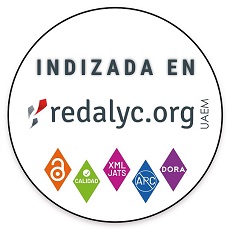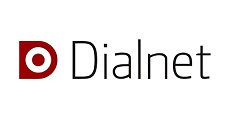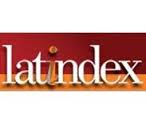Determinantes de las compras impulsivas online: un caso de consumidores jóvenes en Chile
DETERMINANTS OF ONLINE IMPULSE PURCHASES: THE CASE OF YOUNG CONSUMERS IN CHILE
DETERMINANTES DA COMPRA COMPULSIVA ON-LINE: UM CASO DE JOVENS CONSUMIDORES NO CHILE
DOI:
https://doi.org/10.15446/innovar.v34n91.110008Palabras clave:
compra online, marketing, educación financiera, decisión de compra (es)Online shopping, purchase decision, financial education, marketing (en)
compras on-line, decisão de compra, educação financeira, marketing (pt)
En los últimos años, los estudios sobre compras impulsivas en la población joven y adulta joven han sumado importancia principalmente por los efectos en las finanzas personales de los individuos. El presente estudio tuvo por finalidad determinar las variables que afectan el impulso de compra en un caso de jóvenes y adultos jóvenes utilizando una muestra de 243 individuos chilenos. Para ello, se aplicó una encuesta que captura variables demográficas y dos escalas asociadas al locus de control y la impulsividad en la compra. Se estimó un modelo de regresión lineal y logística para obtener los determinantes de la impulsividad y prevalencia en la compra mediante plataformas online. Los resultados muestran que los determinantes se encuentran relacionados al locus de control externo, el ingreso y los métodos de pago asociados al crédito. El aporte principal del trabajo se centra en estudiar los riesgos de la población joven de incurrir en prácticas financieras riesgosas me-diante las compras impulsivas en un contexto de creciente oleada de estímulos que favorecen la compra online. Este estudio aporta a la discusión, analizando la composición de perfiles de riesgo de los jóvenes en torno a la impulsividad y la prevalencia de compra impulsiva en esta población.
In recent years, studies on impulsive purchases among the young and young adult population have gained importance, primarily due to their impact on individuals’ personal finances. Hence, this study sought to determine the variables affecting impulse buying among young adults using a sample of 243 Chilean individuals. To achieve this, a survey capturing demographic variables and two scales associated with locus of control and impulsivity in purchasing was administered. A linear and logistic regression model was employed to identify the determinants of impulsivity and prevalence in online platform purchases. The results indicate that determinants are linked to the external locus of control, income, and payment methods associated with credit. The primary contribution of this research lies in examining the threats faced by young people when participating in risky financial practices through impulsive purchases amidst a growing wave of stimuli favoring online shopping. This study adds to the discussion by analyzing the composition of risk profiles among young people regarding impulsivity and the prevalence of impulsive buying in this population.
nos últimos anos, os estudos sobre compras compulsivas na população de jovens e adultos ganharam importância, principalmente por causa dos efeitos sobre as finanças pessoais dos indivíduos. Este estudo teve como objetivo determinar as variáveis que afetam a compra compulsiva em um caso de jovens e adultos usando uma amostra de 243 indivíduos chilenos. Para isso, foi aplicada uma pesquisa que captava variáveis demográficas e duas escalas associadas ao lócus de controle e à impulsividade na compra. Um modelo de regressão linear e logística foi estimado para obter os determinantes da impulsividade e a prevalência de compras em plataformas on-line. Os resultados mostram que os determinantes estão relacionados ao lócus de controle externo, à renda e aos métodos de pagamento associados ao crédito. A principal contribuição do artigo se concentra no estudo dos riscos dos jovens de se envolverem em práticas financeiras arriscadas por meio de compras compulsivas em um contexto de uma onda crescente de estímulos que favorecem as compras on-line. Este estudo contribui para a discussão ao analisar a composição dos perfis de risco dos jovens com relação à impulsividade e à prevalência da compra por impulso nessa população.
Referencias
Akram, U., Hui, P., Kaleem Khan, M., Tanveer, Y., Mehmood, K., & Ahmad, W. (2018). How website quality affects online impulse buying: Moderating effects of sales promotion and credit card use. Asia Pacific Journal of Marketing and Logistics, 30(1), 235-256. https://doi.org/10.1108/APJML-04-2017-0073 DOI: https://doi.org/10.1108/APJML-04-2017-0073
Amos, C., Holmes, G. R., & Keneson, W. C. (2014). A meta-analysis of consumer impulse buying. Journal of Retailing and Consumer Services, 21(2), 86-97. https://doi.org/10.1016/j.jretconser.2013.11.004 DOI: https://doi.org/10.1016/j.jretconser.2013.11.004
Atulkar, S., & Kesari, B. (2018). Role of consumer traits and situational factors on impulse buying: Does gender matter? International Journal of Retail & Distribution Management, 46(4), 386-405. https://doi.org/10.1108/IJRDM-12-2016-0239 DOI: https://doi.org/10.1108/IJRDM-12-2016-0239
Bauman, Z. (2013). La cultura en el consumo de la modernidad líquida. Fondo de Cultura Economica.
Bucciol, A., & Trucchi, S. (2021). Locus of control and saving: The role of saving motives. Journal of Economic Psychology, 86, 102413. https://doi.org/10.1016/j.joep.2021.102413 DOI: https://doi.org/10.1016/j.joep.2021.102413
Chamberlain, S. R., & Grant, J. E. (2019). Relationship between quality of life in young adults and impulsivity/compulsivity✰. Psychiatry Research, 271, 253-258. https://doi.org/10.1016/j.psychres.2018.11.059 DOI: https://doi.org/10.1016/j.psychres.2018.11.059
Chen, C.-C., & Yao, J.-Y. (2018). What drives impulse buying behaviors in a mobile auction? The perspective of the Stimulus-Organism-Response model. Telematics and Informatics, 35(5), 1249-1262. https://doi.org/10.1016/j.tele.2018.02.007 DOI: https://doi.org/10.1016/j.tele.2018.02.007
Chichaibelu, B. B., & Waibel, H. (2018). Over-indebtedness and its persistence in rural households in Thailand and Vietnam. Journal of Asian Economics, 56, 1-23. https://doi.org/10.1016/j.asieco.2018.04.002 DOI: https://doi.org/10.1016/j.asieco.2018.04.002
Chopdar, P. K., Paul, J., Korfiatis, N., & Lytras, M. D. (2022). Examining the role of consumer impulsiveness in multiple app usage behavior among mobile shoppers. Journal of Business Research, 140, 657-669. https://doi.org/10.1016/j.jbusres.2021.11.031 DOI: https://doi.org/10.1016/j.jbusres.2021.11.031
Cobb-Clark, D. A., Kassenboehmer, S. C., & Sinning, M. G. (2016). Locus of control and savings. Journal of Banking & Finance, 73, 113-130. https://doi.org/10.1016/j.jbankfin.2016.06.013 DOI: https://doi.org/10.1016/j.jbankfin.2016.06.013
Coley, A., & Burgess, B. (2003). Gender differences in cognitive and affective impulse buying. Journal of Fashion Marketing and Management: An International Journal, 7(3), 282-295. https://doi.org/10.1108/13612020310484834 DOI: https://doi.org/10.1108/13612020310484834
Fazli Sabri, M., Cook, C. C., & Gudmunson, C. G. (2012). Financial well‐being of Malaysian college students. Asian Education and Development Studies, 1(2), 153-170. https://doi.org/10.1108/20463161211240124 DOI: https://doi.org/10.1108/20463161211240124
Fenton‐O’Creevy, M., Dibb, S., & Furnham, A. (2018). Antecedents and consequences of chronic impulsive buying: Can impulsive buying be understood as dysfunctional self-regulation? Psychology & Marketing, 35(3), 175-188. https://doi.org/10.1002/mar.21078 DOI: https://doi.org/10.1002/mar.21078
Fenton‐O’Creevy, M., & Furnham, A. (2020). Money Attitudes, Personality and Chronic Impulse Buying. Applied Psychology, 69(4), 1557-1572. https://doi.org/10.1111/apps.12215 DOI: https://doi.org/10.1111/apps.12215
Friedman, M. (1957). Theory of the Consumption Function. Princeton University Press. DOI: https://doi.org/10.1515/9780691188485
Ganong, P., & Noel, P. (2019). Consumer Spending during Unemployment: Positive and Normative Implications. American Economic Review, 109(7), 2383-2424. https://doi.org/10.1257/aer.20170537 DOI: https://doi.org/10.1257/aer.20170537
Gathergood, J. (2012). Self-control, financial literacy and consumer over-indebtedness. Journal of Economic Psychology, 33(3), 590-602. https://doi.org/10.1016/j.joep.2011.11.006 DOI: https://doi.org/10.1016/j.joep.2011.11.006
Gierl, H., & Stumpp, S. (1999). L’influence des convictions de contrôle et des attitudes globales sur le comportement écologique du consommateur. Recherche et Applications En Marketing (French Edition), 14(2), 71-83. https://doi.org/10.1177/076737019901400205 DOI: https://doi.org/10.1177/076737019901400205
Goel, P., Parayitam, S., Sharma, A., Rana, N. P., & Dwivedi, Y. K. (2022). A moderated mediation model for e-impulse buying tendency, customer satisfaction and intention to continue e-shopping. Journal of Business Research, 142, 1-16. https://doi.org/10.1016/j.jbusres.2021.12.041 DOI: https://doi.org/10.1016/j.jbusres.2021.12.041
Goyal, K., Kumar, S., Xiao, J. J., & Colombage, S. (2022). The psychological antecedents of personal financial management behavior: A meta-analysis. International Journal of Bank Marketing, ahead-of-print(ahead-of-print). https://doi.org/10.1108/IJBM-02-2022-0088 DOI: https://doi.org/10.1108/IJBM-02-2022-0088
Greene, W. H. (2012). Econometric Analysis (7th ed.). Prentice Hall.
Gutiérrez Flórez, L. E., Correa Escobar, M. I., Henao Restrepo, A., Arango Botero, D., & Valencia Arias, A. (2018). Influence of social networks on the purchase decisions of university students. Cuadernos de Gestión, 18(1), 61-84. https://doi.org/10.5295/cdg.150577lj DOI: https://doi.org/10.5295/cdg.150577lj
Hendrawan, D., & Nugroho, D. A. (2018). Influence of personality on impulsive buying behaviour among Indonesian young consumers. International Journal of Trade and Global Markets. https://www.inderscienceonline.com/doi/abs/10.1504/IJTGM.2018.092489 DOI: https://doi.org/10.1504/IJTGM.2018.10012024
Hermes, A., & Riedl, R. (2021). Influence of Personality Traits on Choice of Retail Purchasing Channel: Literature Review and Research Agenda. Journal of Theoretical and Applied Electronic Commerce Research, 16(7), 3299-3320. https://doi.org/10.3390/jtaer16070179 DOI: https://doi.org/10.3390/jtaer16070179
Himawari, R. C., Prayoga, T., Fajrianti, S. P., & Abraham, J. (2018). Online Impulse Buying: The Role of Self-Construction and Online Shop Aesthetics (SSRN Scholarly Paper ID 3275095). Social Science Research Network. https://papers.ssrn.com/abstract=3275095 DOI: https://doi.org/10.18517/ijaseit.8.5.1587
Hohnen, P., Gram, M., & Jakobsen, T. B. (2020). Debt as the new credit or credit as the new debt? A cultural analysis of credit consumption among Danish young adults. Journal of Youth Studies, 23(3), 356-370. https://doi.org/10.1080/13676261.2019.1609660 DOI: https://doi.org/10.1080/13676261.2019.1609660
Husnain, M., Rehman, B., Syed, F., & Akhtar, M. W. (2019). Personal and In-store Factors Influencing Impulse Buying Behavior among Generation Y Consumers of Small Cities. Business Perspectives and Research, 7(1), 92-107. https://doi.org/10.1177/2278533718800625 DOI: https://doi.org/10.1177/2278533718800625
Islam, T., Wei, J., Sheikh, Z., Hameed, Z., & Azam, R. I. (2017). Determinants of compulsive buying behavior among young adults: The mediating role of materialism. Journal of Adolescence, 61, 117-130. https://doi.org/10.1016/j.adolescence.2017.10.004 DOI: https://doi.org/10.1016/j.adolescence.2017.10.004
Iyer, G. R., Blut, M., Xiao, S. H., & Grewal, D. (2020). Impulse buying: A meta-analytic review. Journal of the Academy of Marketing Science, 48(3), 384-404. https://doi.org/10.1007/s11747-019-00670-w DOI: https://doi.org/10.1007/s11747-019-00670-w
Japutra, A., & Song, Z. (2020). Mindsets, shopping motivations and compulsive buying: Insights from China. Journal of Consumer Behaviour, 19(5), 423-437. https://doi.org/10.1002/cb.1821 DOI: https://doi.org/10.1002/cb.1821
Kacen, J. J., Hess, J. D., & Walker, D. (2012). Spontaneous selection: The influence of product and retailing factors on consumer impulse purchases. Journal of Retailing and Consumer Services, 19(6), 578-588. https://doi.org/10.1016/j.jretconser.2012.07.003 DOI: https://doi.org/10.1016/j.jretconser.2012.07.003
Kesavayuth, D., Ko, K. M., & Zikos, V. (2018). Locus of control and financial risk attitudes. Economic Modelling, 72, 122-131. https://doi.org/10.1016/j.econmod.2018.01.010 DOI: https://doi.org/10.1016/j.econmod.2018.01.010
Lim, S. H., Lee, S., & Kim, D. J. (2017). Is Online Consumers’ Impulsive Buying Beneficial for E-Commerce Companies? An Empirical Investigation of Online Consumers’ Past Impulsive Buying Behaviors. Information Systems Management, 34(1), 85-100. https://doi.org/10.1080/10580530.2017.1254458 DOI: https://doi.org/10.1080/10580530.2017.1254458
Lindheimer, N., Nicolai, J., & Moshagen, M. (2020). General rather than specific: Cognitive deficits in suppressing task irrelevant stimuli are associated with buying-shopping disorder. PLOS ONE, 15(8), e0237093. https://doi.org/10.1371/journal.pone.0237093 DOI: https://doi.org/10.1371/journal.pone.0237093
Lixăndroiu, R., Cazan, A.-M., & Maican, C. I. (2021). An Analysis of the Impact of Personality Traits towards Augmented Reality in Online Shopping. Symmetry, 13(3), 416. https://doi.org/10.3390/sym13030416 DOI: https://doi.org/10.3390/sym13030416
Madeira Pontes, M. D., Peñaloza, V., Duarte Pontes, T. L., Madeira Pontes, M. D., Peñaloza, V., & Duarte Pontes, T. L. (2020). IMPACT OF FINANCIAL DIFFICULTIES ON CONSUMER BEHAVIOR: GENDER DIFFERENCES. Innovar, 30(75), 31-42. https://doi.org/10.15446/innovar.v30n75.83237 DOI: https://doi.org/10.15446/innovar.v30n75.83237
Mansilla, L., Denegri, M., & Álvarez, B. (2016). Relación entre actitudes hacia el endeudamiento y locus de control del consumidor en estudiantes universitarios. Suma Psicológica, 23(1), 1-9. https://doi.org/10.1016/j.sumpsi.2015.11.002 DOI: https://doi.org/10.1016/j.sumpsi.2015.11.002
Maraz, A., Griffiths, M. D., & Demetrovics, Z. (2016). The prevalence of compulsive buying: A meta-analysis. Addiction, 111(3), 408-419. https://doi.org/10.1111/add.13223 DOI: https://doi.org/10.1111/add.13223
McGee, A., & McGee, P. (2016). Search, effort, and locus of control. Journal of Economic Behavior & Organization, 126, 89-101. https://doi.org/10.1016/j.jebo.2016.03.001 DOI: https://doi.org/10.1016/j.jebo.2016.03.001
McNeill, L. S. (2014). The place of debt in establishing identity and self-worth in transitional life phases: Young home leavers and credit. International Journal of Consumer Studies, 38(1), 69-74. https://doi.org/10.1111/ijcs.12065 DOI: https://doi.org/10.1111/ijcs.12065
Merello, P., Poza, E. de la, & Jódar, L. (2020). Explaining shopping behavior in a market economy country: A short-term mathematical model applied to the case of Spain. Mathematical Methods in the Applied Sciences, 43(14), 8089-8104. https://doi.org/10.1002/mma.6072 DOI: https://doi.org/10.1002/mma.6072
Mette, F. M. B., de Matos, C. A., Rohden, S. F., & Ponchio, M. C. (2019). Explanatory mechanisms of the decision to buy on credit: The role of materialism, impulsivity and financial knowledge. Journal of Behavioral and Experimental Finance, 21, 15-21. https://doi.org/10.1016/j.jbef.2018.10.002 DOI: https://doi.org/10.1016/j.jbef.2018.10.002
Mitchell, M. R., & Potenza, M. N. (2014). Addictions and Personality Traits: Impulsivity and Related Constructs. Current Behavioral Neuroscience Reports, 1(1), 1-12. https://doi.org/10.1007/s40473-013-0001-y DOI: https://doi.org/10.1007/s40473-013-0001-y
Nalurita, F., Leon, F. M., & Hady, H. (2020). Factor Influencing Investor’s Decision Making in Indonesia: Moderating the Role of Locus of Control. https://doi.org/10.33642/ijbass.v6n4p6 DOI: https://doi.org/10.33642/ijbass.v6n4p6
Otero-López, J. M., & Villardefrancos, E. (2014). Prevalence, sociodemographic factors, psychological distress, and coping strategies related to compulsive buying: A cross sectional study in Galicia, Spain. BMC Psychiatry, 14(1), 101. https://doi.org/10.1186/1471-244X-14-101 DOI: https://doi.org/10.1186/1471-244X-14-101
Otero-López, J. M., & Villardefrancos, E. (2015). Compulsive buying and life aspirations: An analysis of intrinsic and extrinsic goals. Personality and Individual Differences, 76, 166-170. https://doi.org/10.1016/j.paid.2014.12.013 DOI: https://doi.org/10.1016/j.paid.2014.12.013
Peña-García, N., Gil-Saura, I., Rodríguez-Orejuela, A., & Siqueira-Junior, J. R. (2020). Purchase intention and purchase behavior online: A cross-cultural approach. Heliyon, 6(6), e04284. https://doi.org/10.1016/j.heliyon.2020.e04284 DOI: https://doi.org/10.1016/j.heliyon.2020.e04284
Punj, G. (2011). Impulse buying and variety seeking: Similarities and differences. Journal of Business Research, 64(7), 745-748. https://doi.org/10.1016/j.jbusres.2010.07.007 DOI: https://doi.org/10.1016/j.jbusres.2010.07.007
Reknes, I., Visockaite, G., Liefooghe, A., Lovakov, A., & Einarsen, S. V. (2019). Locus of Control Moderates the Relationship Between Exposure to Bullying Behaviors and Psychological Strain. Frontiers in Psychology, 10. https://doi.org/10.3389/fpsyg.2019.01323 DOI: https://doi.org/10.3389/fpsyg.2019.01323
Revilla, R. G., Acosta, C., & Reyna, C. (2013). Estudios de validez y confiabilidad de la escala de compra impulsiva en jóvenes y adultos de la ciudad de Córdoba, Argentina. Ciencias Psicológicas, 7(2), 133-142. https://doi.org/10.22235/cp.v7i1.1054 DOI: https://doi.org/10.22235/cp.v7i1.1054
Rodriguez-Ricardo, Y., Sicilia, M., & López, M. (2019). Altruism and Internal Locus of Control as Determinants of the Intention to Participate in Crowdfunding: The Mediating Role of Trust. Journal of Theoretical and Applied Electronic Commerce Research, 14(3), 1-16. https://doi.org/10.4067/S0718-18762019000300102 DOI: https://doi.org/10.4067/S0718-18762019000300102
Rotter, J. B. (1966). Generalized expectancies for internal versus external control of reinforcement. Psychological Monographs: General and Applied, 80(1), 1-28. https://doi.org/10.1037/h0092976 DOI: https://doi.org/10.1037/h0092976
Santini, F. D. O., Ladeira, W. J., Vieira, V. A., Araujo, C. F., & Sampaio, C. H. (2019). Antecedents and consequences of impulse buying: A meta-analytic study. RAUSP Management Journal, 54(2), 178-204. https://doi.org/10.1108/rausp-07-2018-0037 DOI: https://doi.org/10.1108/RAUSP-07-2018-0037
Schnitzlein, D. D., & Stephani, J. (2016). Locus of Control and low-wage mobility. Journal of Economic Psychology, 53, 164-177. https://doi.org/10.1016/j.joep.2016.01.004 DOI: https://doi.org/10.1016/j.joep.2016.01.004
Scholnick, B., Massoud, N., & Saunders, A. (2013). The impact of wealth on financial mistakes: Evidence from credit card non-payment. Journal of Financial Stability, 9(1), 26-37. https://doi.org/10.1016/j.jfs.2012.11.005 DOI: https://doi.org/10.1016/j.jfs.2012.11.005
Shareef, M. A., Dwivedi, Y. K., Kumar, V., Davies, G., Rana, N., & Baabdullah, A. (2018). Purchase intention in an electronic commerce environment: A trade-off between controlling measures and operational performance. Information Technology & People, 32(6), 1345-1375. https://doi.org/10.1108/ITP-05-2018-0241 DOI: https://doi.org/10.1108/ITP-05-2018-0241
Sharma, N., Lal, M., Goel, P., Sharma, A., & Rana, N. P. (2022). Being socially responsible: How green self-identity and locus of control impact green purchasing intentions? Journal of Cleaner Production, 357, 131895. https://doi.org/10.1016/j.jclepro.2022.131895 DOI: https://doi.org/10.1016/j.jclepro.2022.131895
Sofi, S. A., & Najar, S. A. (2018). Impact of personality influencers on psychological paradigms: An empirical-discourse of big five framework and impulsive buying behaviour. European Research on Management and Business Economics, 24(2), 71-81. https://doi.org/10.1016/j.iedeen.2017.12.002 DOI: https://doi.org/10.1016/j.iedeen.2017.12.002
Stern, H. (1962). The Significance of Impulse Buying Today. Journal of Marketing, 26(2), 59-62. https://doi.org/10.1177/002224296202600212 DOI: https://doi.org/10.1177/002224296202600212
Sundström, M., Hjelm-Lidholm, S., & Radon, A. (2019). Clicking the boredom away – Exploring impulse fashion buying behavior online. Journal of Retailing and Consumer Services, 47, 150-156. https://doi.org/10.1016/j.jretconser.2018.11.006 DOI: https://doi.org/10.1016/j.jretconser.2018.11.006
Tarka, P., & Babaev, J. (2020). Clinical Screener (CS): Instrument refinement and comparison of compulsive buying prevalence among Polish young consumers of Eastern Europe to Western culture. Journal of Marketing Theory and Practice, 0(0), 1-23. https://doi.org/10.1080/10696679.2020.1812403 DOI: https://doi.org/10.1080/10696679.2020.1812403
Toti, J.-F., Diallo, M. F., & Huaman-Ramirez, R. (2021). Ethical sensitivity in consumers’ decision-making: The mediating and moderating role of internal locus of control. Journal of Business Research, 131, 168-182. https://doi.org/10.1016/j.jbusres.2021.03.045 DOI: https://doi.org/10.1016/j.jbusres.2021.03.045
Turkyilmaz, C. A., Erdem, S., & Uslu, A. (2015). The Effects of Personality Traits and Website Quality on Online Impulse Buying. Procedia - Social and Behavioral Sciences, 175, 98-105. https://doi.org/10.1016/j.sbspro.2015.01.1179 DOI: https://doi.org/10.1016/j.sbspro.2015.01.1179
Vartanova, I. (2014). Motivation, Self-attitude and Control Locus of Senior Schoolchildren. Procedia - Social and Behavioral Sciences, 146, 358-363. https://doi.org/10.1016/j.sbspro.2014.08.112 DOI: https://doi.org/10.1016/j.sbspro.2014.08.112
Wang, L., Lu, W., & Malhotra, N. K. (2011). Demographics, attitude, personality and credit card features correlate with credit card debt: A view from China. Journal of Economic Psychology, 32(1), 179-193. DOI: https://doi.org/10.1016/j.joep.2010.11.006
Wang, L., & Lv, M. (2020). Internal-External Locus of Control Scale. En V. Zeigler-Hill & T. K. Shackelford (Eds.), Encyclopedia of Personality and Individual Differences (pp. 2339-2343). Springer International Publishing. https://doi.org/10.1007/978-3-319-24612-3_41 DOI: https://doi.org/10.1007/978-3-319-24612-3_41
Weinstein, A., Mezig, H., Mizrachi, S., & Lejoyeux, M. (2015). A study investigating the association between compulsive buying with measures of anxiety and obsessive–compulsive behavior among internet shoppers. Comprehensive Psychiatry, 57, 46-50. https://doi.org/10.1016/j.comppsych.2014.11.003 DOI: https://doi.org/10.1016/j.comppsych.2014.11.003
Wells, J., Parboteeah, V., & Valacich, J. (2011). Online Impulse Buying: Understanding the Interplay between Consumer Impulsiveness and Website Quality. Journal of the Association for Information Systems, 12(1). https://doi.org/10.17705/1jais.00254 DOI: https://doi.org/10.17705/1jais.00254
Wilcox, K., Block, L. G., & Eisenstein, E. M. (2011). Leave Home without it? The Effects of Credit Card Debt and Available Credit on Spending. Journal of Marketing Research, 48(SPL), S78-S90. https://doi.org/10.1509/jmkr.48.SPL.S78 DOI: https://doi.org/10.1509/jmkr.48.SPL.S78
Wu, I.-L., Chiu, M.-L., & Chen, K.-W. (2020). Defining the determinants of online impulse buying through a shopping process of integrating perceived risk, expectation-confirmation model, and flow theory issues. International Journal of Information Management, 52, 102099. https://doi.org/10.1016/j.ijinfomgt.2020.102099 DOI: https://doi.org/10.1016/j.ijinfomgt.2020.102099
Zainudin, R., Mahdzan, N. S., & Yeap, M.-Y. (2019). Determinants of credit card misuse among Gen Y consumers in urban Malaysia. International Journal of Bank Marketing, 37(5), 1350-1370. https://doi.org/10.1108/IJBM-08-2018-0215 DOI: https://doi.org/10.1108/IJBM-08-2018-0215
Zhao, Y., Li, Y., Wang, N., Zhou, R., & Luo, X. (Robert). (2021). A Meta-Analysis of Online Impulsive Buying and the Moderating Effect of Economic Development Level. Information Systems Frontiers. https://doi.org/10.1007/s10796-021-10170-4 DOI: https://doi.org/10.1007/s10796-021-10170-4
Cómo citar
APA
ACM
ACS
ABNT
Chicago
Harvard
IEEE
MLA
Turabian
Vancouver
Descargar cita
Licencia
Derechos de autor 2023 Innovar

Esta obra está bajo una licencia internacional Creative Commons Atribución-NoComercial-SinDerivadas 4.0.
Todos los artículos publicados por Innovar se encuentran disponibles globalmente con acceso abierto y licenciados bajo los términos de Creative Commons Atribución-No_Comercial-Sin_Derivadas 4.0 Internacional (CC BY-NC-ND 4.0).
Una vez seleccionados los artículos para un número, y antes de iniciar la etapa de cuidado y producción editorial, los autores deben firmar una cesión de derechos patrimoniales de su obra. Innovar se ciñe a las normas colombianas en materia de derechos de autor.
El material de esta revista puede ser reproducido o citado con carácter académico, citando la fuente.
Esta obra está bajo una Licencia Creative Commons:






















